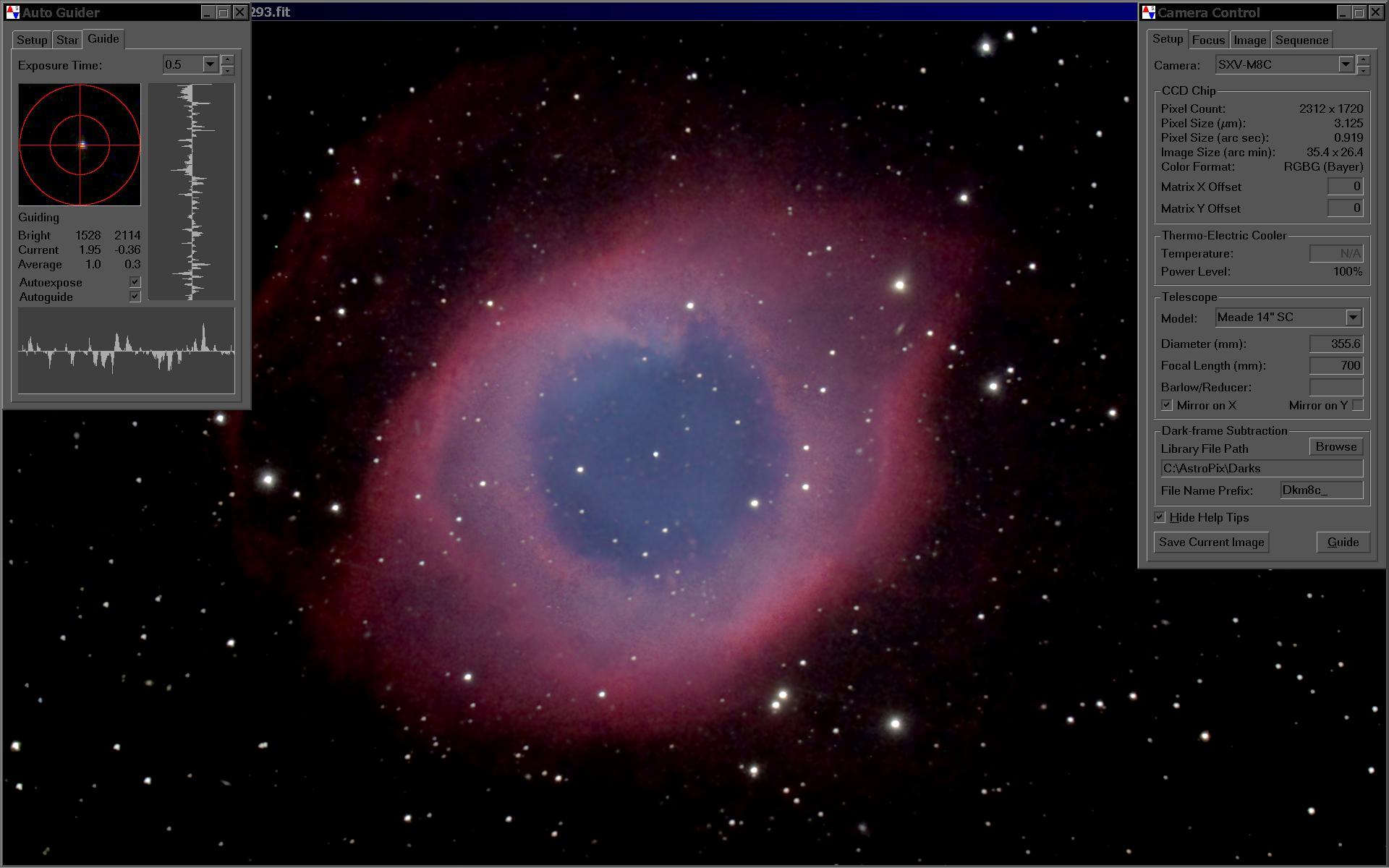
AstroPix
AstroPix is a relatively recent addition to OmniGlyph (mid 2007). The example shown below is an actual screen snapshot taken during a nighttime astronomy outing deep in the Florida Everglades. At the time of the photo, AstroPix was running two cameras, one for imaging and the other for autoguiding the telescope to minimize tracking errors as the stars arc across the night sky. The object being photographed is NGC7293, the Helix Nebula. The menus and dialog boxes have been subdued by the application of a "darksky" theme.

Dark Frame Subtraction.
As the first step in processing a newly acquired astro-image, the
appropriate "dark frame" is subtracted from the new image. This operation
is actually nothing more than subtracting the corresponding "dark" pixel from
each and every source pixel in the target image. This effectively removes both
the ADC bias and any patterned noise (such as hot pixels) from the image.
Flat Field Compensation.
Once the bias has been removed from a photo, the remaining data is (more or less)
a count of the actual number of photons captured by each pixel during the exposure
time. Since all lens systems have at least a small amount of radial fall-off in
signal strength, a correction can be made by dividing the value of each pixel
by a normalized "white frame".
Colorization from Bayer Matrix data.
If the attached device is a "one shot color" camera, the Bayer Matrix is decoded
and the raw data is converted to a floating-point color image. The completed
picture is now ready for more complex processing steps.
Star alignment and image stacking.
The fully corrected picture is now matched up to the accumulating astro-image
by locating the brightest and most well formed stars in each image and applying
an affine transformation to match up the images. The transformed image is then
added to the data from the previous set of pictures to produce a final result.
